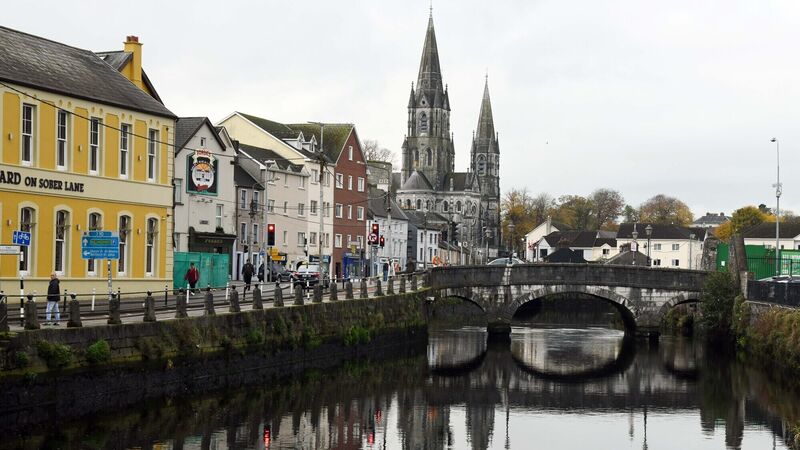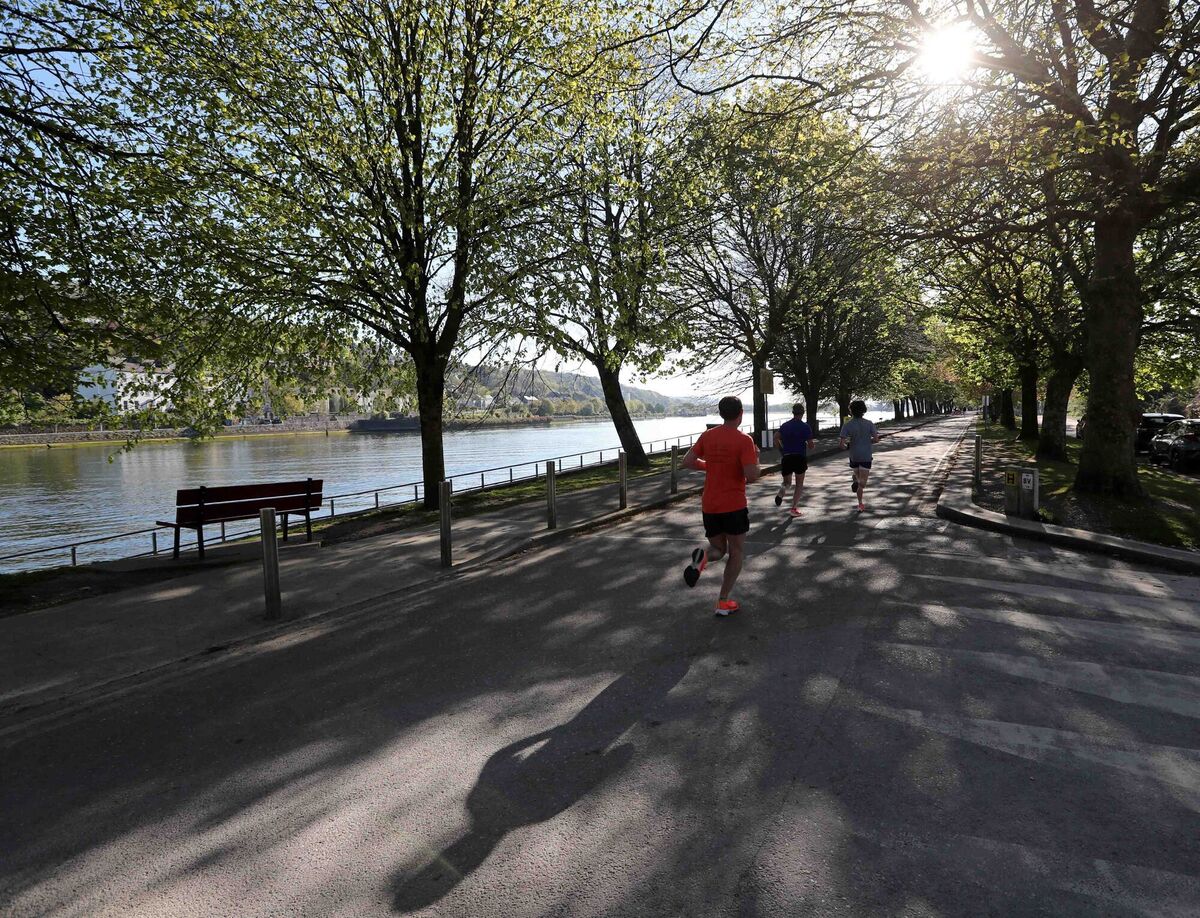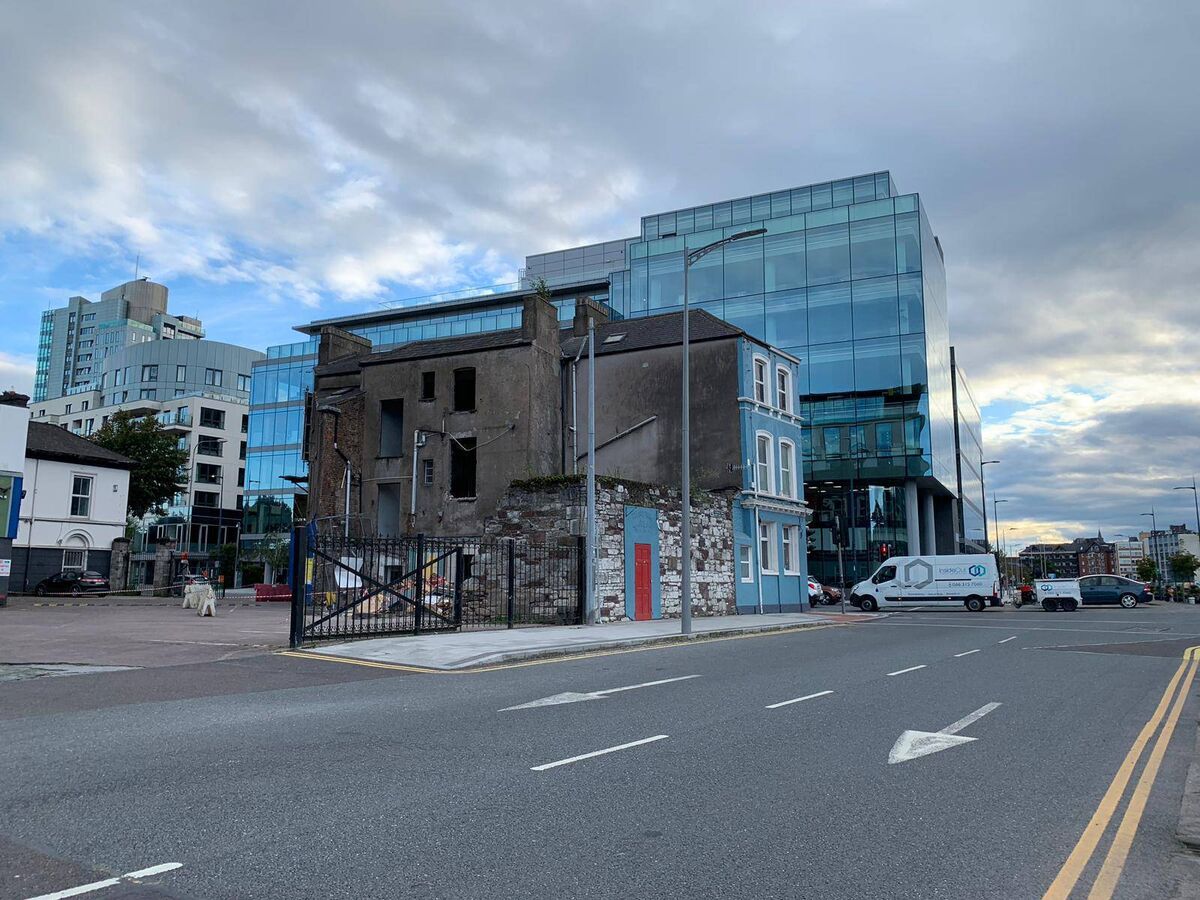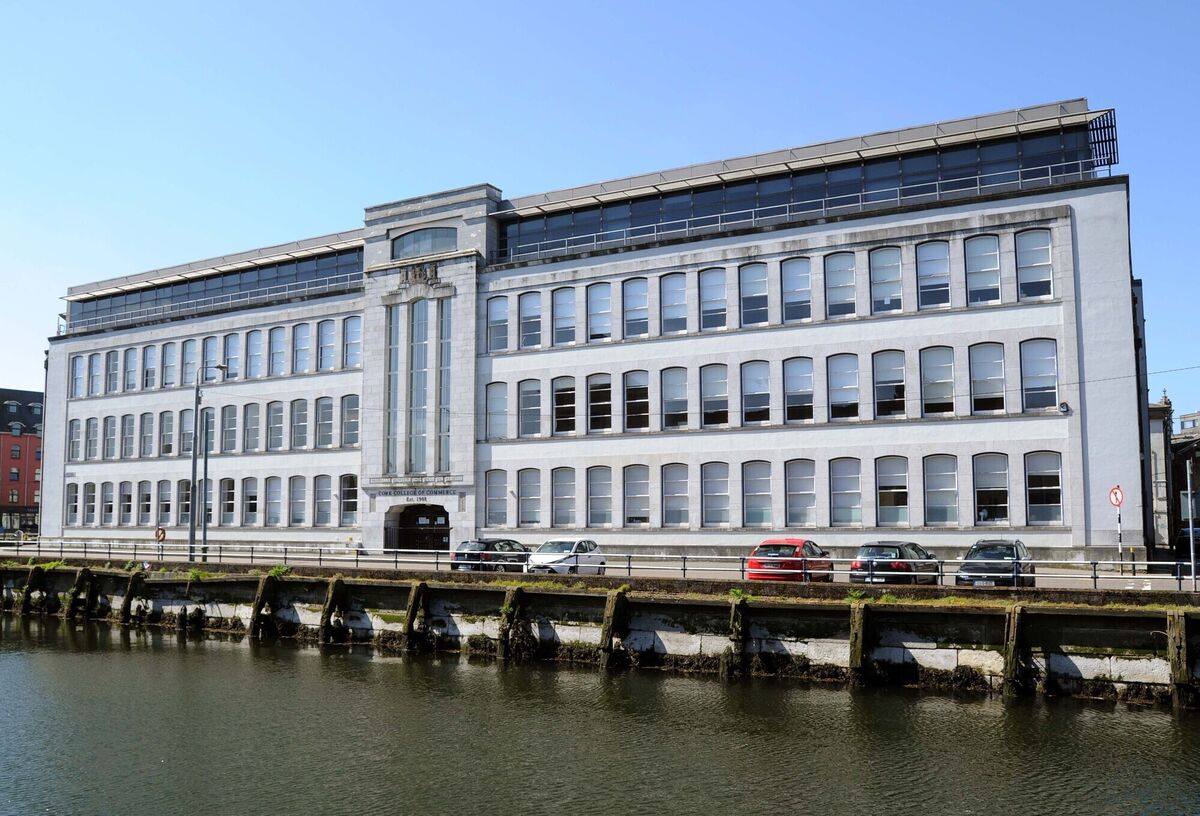Michael Moynihan: As Cork city develops we must not lose sight of the views

From Parliament Bridge in Cork city there is a good line of view of St Fin Barre’s Cathedral, which is a skyscraper of a different order. Picture: Denis Minihane
A rare occurrence last weekend: off work. Had almost forgotten that Cork exists on a Sunday as well as the rest of the week.
I made the most of my free time by taking a stroll around town, ducking in and out of the showers as I went. I eventually turned towards the Marina for reasons completely unconnected with the Cortado Coffee stop (though why more coffee trucks don’t sell bars of chocolate, well, maybe someone should write a column about that).

Along the way, I took in the cityscape along the riverside — Horgan’s Quay, Lapp’s Quay, Albert Quay — and noted in passing the height of the buildings for one particular reason. I’d just listened to the (always) excellent Slate Money podcast episode from last week, one which dealt with the specific issues raised by building upwards, and which featured Stefan Al, architect and author of Supertall: How the World’s Tallest Buildings Are Reshaping Our Cities and Our Lives.
Al’s points resonated as I strolled around the vertical parts of the city, though I had a particular experience that is shared by many Cork residents of a particular vintage: trying to recall what some of the city’s nooks and crannies looked like before being smoothed out and glassed over — when they really were nooks and crannies.
This is a harder assignment than you might think. It’s extraordinary how quickly you forget the building which stood in one particular spot for years, blending into the background so seamlessly you forget what purpose it actually served.
(Case in point: I spoke to Joe Healy last week here and during the week he posted a picture on social media that showed the buildings which stood on Anderson’s Quay before Jury’s Inn was built there: kudos to anyone who remembers what those buildings were.)
Back to Al. One of the first points to make is that Cork’s buildings are not ‘supertall’ — let’s be honest, imposing though those buildings are in our own specific context, they’re probably best described as middling-tall. Medium-small even.
But Al’s views are worth repurposing when we examine the implications of this new building style for our city. Considerations of space mean Cork is building upwards, but there are other factors involved. One review of his book suggested the architect “understands that skyscrapers are a product of technology, finance, zoning, marketing, social preferences and aesthetics, and that to ignore any one of these categories is to misunderstand the subject.”
This is a collection of factors that aren’t always in harmony, of course. Technology makes building upward possible, and finance is available for such towering blocks, but social preference in Ireland has long been in favour of single-house occupancy; on the other hand, the requirements of zoning in the broadest sense mean more accommodation is required, and finance (in the homebuyer sense) means apartments may be a more realistic target than a single house.

The ebb and flow of primacy among these categories means balancing the importance of one may relegate another when it comes to consideration — until events push the second-class category back to the top ranking again. (All of this, of course, is before we even begin to take on our own particular issues, such as the u-turn on the future of the site of the old Sextant pub in Cork, when planning permission was granted for a residential tower until the developer decided that wouldn't be as profitable as an office block.)
While listening to the podcast, however, I made another discovery when host Felix Salmon referred to a particular approach adopted in London designed to protect iconic views.
“London has a very extensive protected view corridor system, and I believe there’s 13 view corridors going from iconic sites to iconic buildings,” he said.
“The view from Regent’s Park to, let’s say St Paul’s Cathedral. And these were set up in response to what people perceived as eyesores and these were very much respected up until I would say, you know, 10 or 20 years ago.
“That’s when also the tide started to swing the other way.”
Given the focus in Cork on building riverside, I found this particularly interesting. If the city is to be oriented in that direction and building is to continue down towards the harbour, should we be cognisant of views that may be obscured from the city as we look down the river?
Granted, the natural bend of the river and the heights of the northside towards Montenotte and environs are visible now, but will there come a time when those sights are harder to enjoy?
In that context, it was interesting to stand in the middle of Clontarf Street bridge over the weekend and imagine what would or wouldn’t be visible when there’s a new build at the tip of Lapp’s Quay where the Custom House building stands now.

When I strolled back into town along the riverside the view corridors weren’t hectic either, to begin with. The bulk of the College of Commerce and School of Music means you don’t see an awful lot of the cityscape out beyond the central island of the city, for instance, but the obvious rejoinder is that once you get past those buildings, and RTÉ Cork and the Holy Trinity, you’re into a pretty stunning view corridor, one in a class all its own.
You can push up towards Parliament Bridge and get a good line on St Fin Barre’s Cathedral, which is a skyscraper of a different order.
Before I abandon that podcast — which I was listening to again as I strolled, so apologies if I blanked you on my travels down the Marina — Al brought up one more interesting question, one to consider as we wrap these tower blocks in our sweaty embrace.
How green are they?
Al said the concept of a “green building” can be very limited “because we tend to focus on a green building that’s run operationally very efficiently, meaning all the energy we use to heat the building, to cool the building or to run the lighting that we have, like energy-saving devices, or we’re using renewable energy for that.
“But what we don’t take into this equation is all the energy that we need to construct a building”.
Building is a significant contributor to global carbon emissions. Some experts estimate that building operations account for as much as 28% of global emissions, but another 10% of emissions on top of that come from construction-related industries.
“That is all the energy that you use for the materials,” said Al.
“So think about the concrete that goes into the walls, the floors, the steel, the metal, the glass.
“So you may have a building that is extremely efficient operationally, but you still have that enormous kind of carbon costs that you had in constructing this building in the first place.”
This was an argument I — in my innocence — hadn’t heard before. What good is a ‘green’ building if constructing it in the first place did so much damage before the energy-saving devices were installed?
All of this from one stroll from the quays to the Marina. Suggestions for the next journey welcome.












